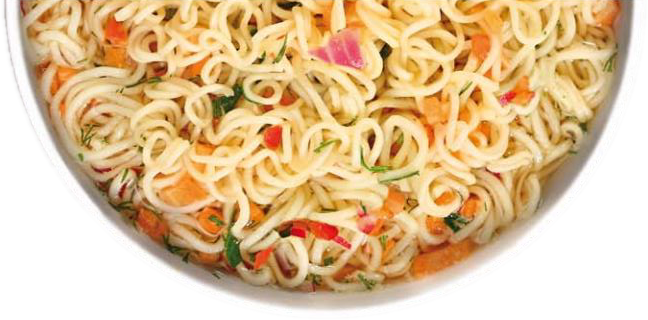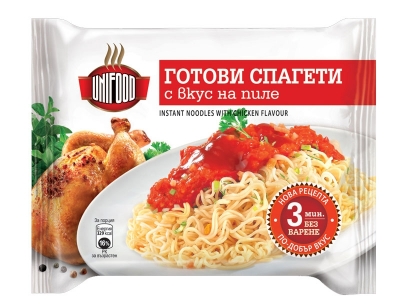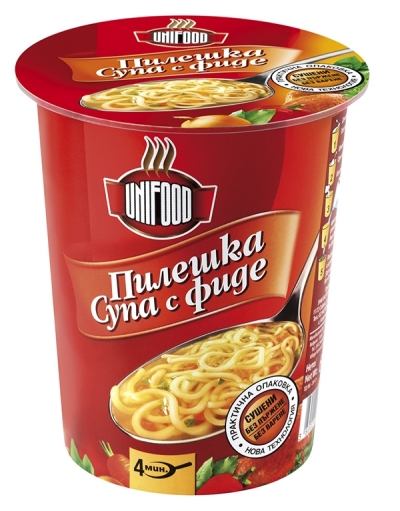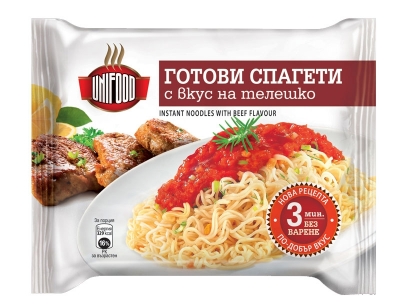Noodle: ORIGIN TASTE TRADITIONS AND LONGEVITY

There culinary disputes centuries await their resolve - what is the origin of Noodle - Chinese or Italian?
Asian Noodle and Italian pasta, especially spaghetti, sometimes mislead consumers because of their similarity in shape. However, the differences are substantial. The dough for most Asian Noodle comprises wheat flour and brine, and was mixed and spread to form thin strips of pasta. Traditionally, pasta is made of durum wheat and water and the basic technology in the production of noodles is the pressing of the dough.
Chinese Noodle take a long time to other Asian countries - Japan, Korea, Taiwan, Thailand, Indonesia, India, where adapt to local tastes and gradually become the main dish. Lightly fried, boiled, served with soup, sauce, in a main dish, or dessert, Noodle are part of the menu at any time of day. For most Asians, they are a symbol of home comfort and good for hrana.Testoto Noodle may contain, besides ordinary wheat, rice, buckwheat, or mung bean starch, tapioca, yam, rice, corn. Of course, the most consumed Noodle from wheat flour and rice. In northern China usually prepared from wheat flour, because the cold, dry climate there is favorable for growing rice. And in the southern part of Southeast Asia - Vietnam and Thailand, the warm and humid climate is a boon to rice crops.
The variety of Noodle is due to the different forms. They can be flat or round, wide or thin, fresh or dried. Unlike the types of Italian pasta, sometimes short and thick, most Asian Noodle are thin and long. Some local cultures believe Noodle symbolize longevity and therefore appear in the menu of all parties. In this part of the world there is still some tradition Noodle knead and shape only by hand. Chinese la Mien enjoy worldwide popularity thanks to clever technique for shaping the dough strands. Slice dough can turn in all types of Noodle - flat, round, thick, thin, with Messi, folds, turns and stretches. The famous "dragon beard" as well as their very name suggests, are subtle and delicate and for this purpose the dough is stretched until a 4096 thin filaments. Masters never use a rolling pin, only their own strength - physical and spiritual, as well as his skill.
There are different traditions for cooking. The Japanese have their own methodology: Noodle pour in boiled water and mix them not to stick. When the water boils again, pour a glass of cold water and allow the mixture to boil for the third time. This technique is suitable for Japanese Noodle which form more foam.
Types of Asian Noodle:
Noodle-bean produced from starch of mung beans. Because they are tasteless, usually in the composition of soups, salads or as a stuffing.
Chinese egg nudali- made from wheat dough, eggs and water, they have a characteristic yellow color. Fresh or dried and of different sizes, egg Noodle are elastic and are suitable for deep-fried food.
Chinese Noodle wheat-wheat flour, water and salt are the main ingredients. They have various shapes and supple texture, can participate in any dishes with a variety of culinary techniques. And fresh and dried wheat Noodle is prepared quickly Rice Noodle-more delicate than wheat Noodle. There are a variety of Rice Noodle: thin and round are preferred in Vietnam; vermicelli-like - in China; and broad and flat rice strips - in Thailand.
Instant Noodle - Popular throughout the world. traditionally Chinese egg Noodle offered pre-cooked and dried with a packet of soup powder.






